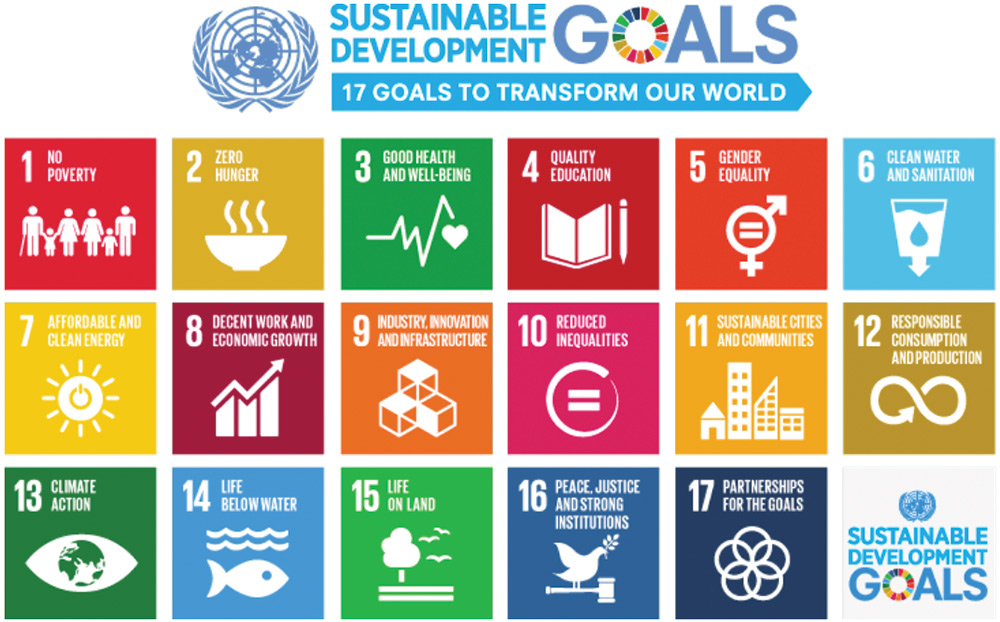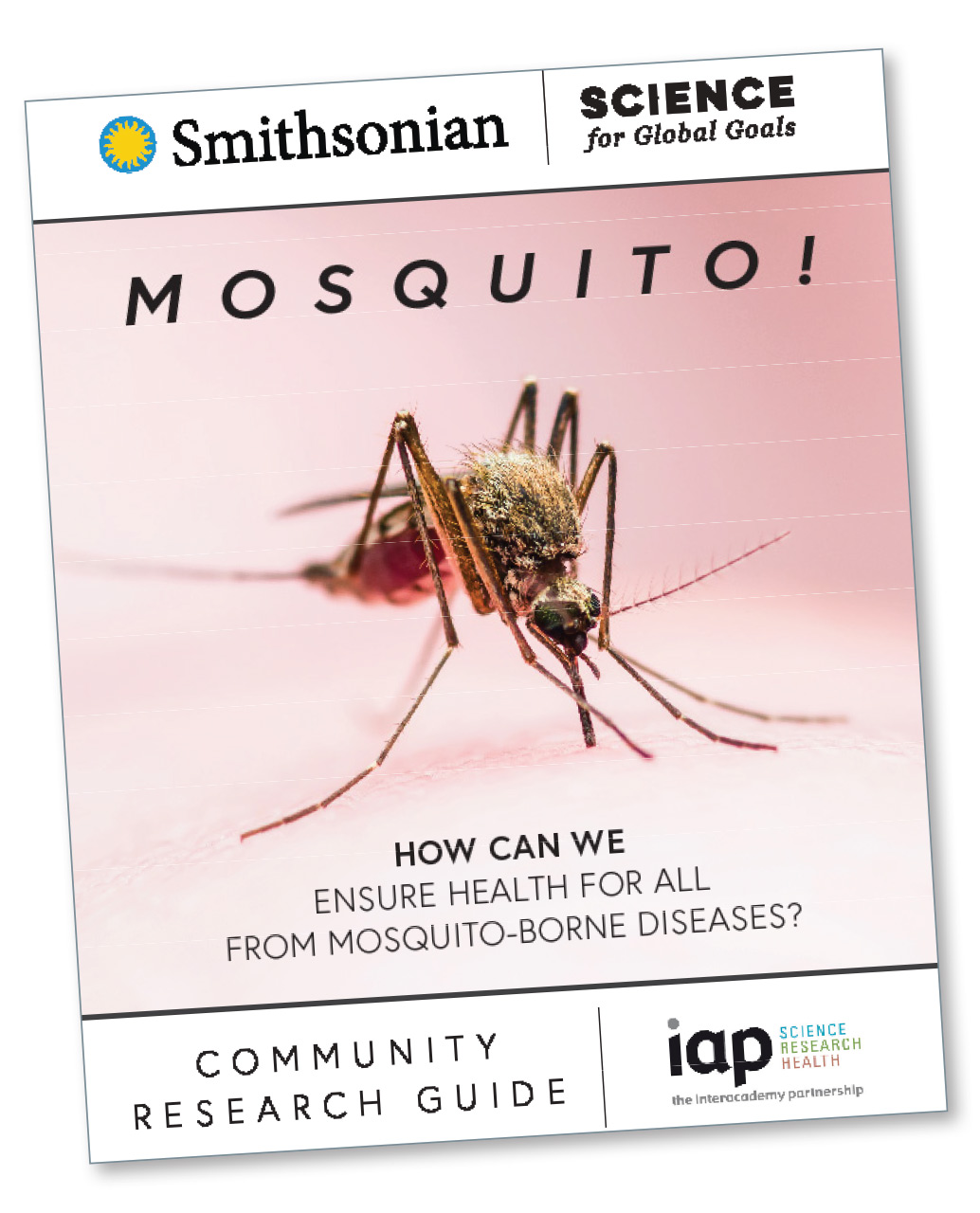G7 Executive Talk Series
Science and the SDGs
Authored by: Dr. Carol O’Donnell
Science Education, Identity, and Civic Engagement:
Empowering Youth through the UN Sustainable Development Goals
Schools around the world are facing similar challenges of increased urban migration, digital divides, and unsatisfactory teacher training; meanwhile, there is an explosion of scientific knowledge and exponential shifts in career paths, which demand that schools prepare students to be scientifically literate. Globalization indicates that the problems of one country affect everyone; therefore, educating all children to be responsive to the issues of the day is critical. As Emmanuel Nnandozie, of the African Capacity Building Foundation (PAS, 2015) notes, “real transformation will not happen unless countries give real priorities to STEM” education. A powerful and sustained implementation of inquiry based science education (IBSE) teamed with civic learning and social emotional learning (SEL) can help students focus on the issues of critical importance, such as climate change, the health of the world’s oceans, and clean energy, while examining each issue from multiple perspectives. Educating youth about complex socio-scientific issues will help to inoculate young people and their teachers and parents against societal and health problems that can adversely affect their lives.

Figure 1: United Nations Development Programme Sustainable Development Goals
The Solution: Sustainable Development Goals (SDGs)
Inspired and motivated by the universal call to action within the United Nations Development Programme (UNDP) Sustainable Development Goals (SDGs) (see Figure 1), the Smithsonian Institution, through the Smithsonian Science Education Center and with the technical support of the InterAcademy Partnership (IAP) and the private sector, has made a collaborative commitment to work towards ensuring inclusive and equitable education programs and lifelong learning opportunities for all. We are doing that by developing a set of free curriculum modules for students ages 8-17 called Smithsonian Science for Global Goals, which blends together previous practices in Inquiry-Based Science Education (IBSE), Social and Emotional Learning (SEL), Global Citizenship Education (GCE), and Education for Sustainable Development (ESD). Smithsonian Science for Global Goals will create new forums across the globe to proffer education solutions to complex socio-scientific problems of national and global import. The goal is to not only teach students the science behind these socio-scientific issues, but to drive students’ capabilities to take action to use this science to do social good in their communities and the world.
Today, the SDGs are driving education decisions in international settings, and the Smithsonian Science Education Center is responding by developing a culturally relevant SDG curriculum to better serve our global audience of young learners. One of the challenges with abstract global goals is how to apply them concretely in local settings. To address that challenge, our curriculum is designed to incorporate place-specific data and community perspectives in order to ensure local relevance. It is not enough to teach students that the SDGs exist. Instead we are seeking new ways for students to embody the SDGs in their classrooms every day.
Through the Smithsonian Science for Global Goals curriculum, the Smithsonian is engaging experts from multiple sectors from around the globe to empower the next generation of decision makers capable of making the right choices about the complex socio-scientific issues facing human society (e.g., climate change, healthy oceans, clean energy, biodiversity, nutrition, healthy ecosystems, freshwater access, pollution, etc). Development partners include researchers, partnering government agencies, private and public-sector funders, and scientists from across the globe who are part of the 130 national and regional academies of science and medicine that are members of the InterAcademy Partnership (IAP).
Pedagogical Approach to Educating Youth on the SDGs
Our pedagogical approach to educating youth on the SDG’s is what we call our “Global Goals Action Progression” (see Figure 2), which combines science education, identity and social and emotional learning, and civic engagement (IBSE, SEL, GCE, ESD). Taken together, these key elements build a progression that takes students from understanding their own identity and the identify of their community as it relates to the socio-scientific issue; to questioning and investigating the relevant scientific and social causes, engaging in critical reasoning and systemic thinking, and then taking their newfound scientific knowledge to engage in social action. The goal is for students to use their newfound scientific knowledge and community understanding to form the habit of taking action on global issues in a way that is locally relevant.
The center portion of the “Global Goals Action Progression”—critical reasoning and systemic understanding—is the tie that binds. Armed with their new scientific understanding of the complex socio-scientific issue, students examine their own values and perspectives (ethical, social, economic, and environmental) on the issue and test how these values and perspectives influence their local and global thinking. Learning teams use their understandings to find common ground, build consensus, and plan and carry out local actions to help attain the SDGs. Along the way, their perspectives and mindsets change as they learn more about the world around them, building a new foundation from which to tackle the next socio-scientific problem.
Mosquito-borne Diseases
Through Smithsonian Science for Global Goals we are not only working toward meeting the
![]() It is not enough to teach students that the SDGs exist. Instead we are seeking new ways for students to embody the SDGs in their classrooms every day.
It is not enough to teach students that the SDGs exist. Instead we are seeking new ways for students to embody the SDGs in their classrooms every day.![]()
2030 agenda of the UN, but we also hope to address the Smithsonian’s 2022 vision to “engage and inspire” more students and teachers, “where they are, with greater impact, while catalyzing critical conversations on issues affecting our nation and the world.”
With educational, social, health, and environmental challenges facing our most vulnerable populations, students around the world need to become scientifically literate citizens who can make informed decisions about their individual and collective futures.
The Smithsonian Science Education Center has developed the first of an anticipated 17 SDG-focused curriculum modules called “Mosquito! How Can We Ensure Health For All From Mosquito-borne Diseases?” (see Figure 3) funded in part by the Gordon and Betty Moore Foundation and Johnson & Johnson. Mosquito! addresses SDG #3, 4,

Figure 2: Global Goals Action Progression for the “Smithsonian Science for Global Goals” Curriculum
Source: 2018 Smithsonian Institution: Heidi Gibson, Katherine Blanchard, Andre Radloff, Brian Mandell
16 and 17 and employs the latest research on how children learn. We have also proposed a tentative framework for the titles for 16 additional Smithsonian Science for Global Goals curriculum modules. The modules develop socio scientific understanding across goals and targets, rather than each module addressing one individual SDG. This helps to build connections between the goals. Each curriculum module will be translated into several languages and the emphasis on local knowledge means teachers can adapt it to the context of their classroom.
With the help of private and government sectors, our next step is to take this framework and example module and seek funds to develop the remaining curriculum modules and develop support for teachers so that we can freely disseminate and implement the curriculum across the globe.

Figure 3: “Mosquito!”—the first of 17 proposed SDG curriculum modules for students ages 8-17
Source: 2018 Smithsonian Institution: Authors: Andre Radloff and Brian Mandell
According to the United Nations, the World Bank, and the International Monetary Fund, economies around the world are reorganizing their giving to align with the SDGs. Corporations are also recognizing the importance of supporting trusted organizations—like the Smithsonian and academies of science—that are catalyzing critical conversations that affect the nation and the world. Corporate Social Responsibility dollars, and even dollars once reserved for marketing, are now shifting to support SDG-related activities. Consumers—and today’s youth are making more of their choices about which companies they support based on how much “social good” those companies are doing and whether the companies are helping the planet and its citizens. The SDGs are helping to prepare students to be scientifically literate and drive social change.
Carol’s 35 years in science education include working at the Smithsonian Institution, National Academy of Sciences, U.S. Department of Education, and George Washington University. Carol has expertise in education policy, professional development, cognition, curriculum development, and education research. She serves on the InterAcademy Partnership (IAP) Science Education Programme Global Council.
The Smithsonian Science Education Center is an industry leader when it comes to hands-on, experiential learning. The Smithsonian Science Education Center was jointly founded in 1985 by the National Academy of Sciences and the Smithsonian Institution to transform the teaching and learning of science for all students. In 2010 the Smithsonian Science Education Center was brought fully in the Smithsonian Institution, but continues to represent the National Academy of Sciences for K-12 education outside the United States through a long-term agreement. The Smithsonian Science Education Center has been producing world class science curriculum for over 30 years that integrates the arts, history, culture and science of the Smithsonian. The Smithsonian Science Education Center’s curriculum is used in all 50 US states, reaching 6.5 million students in 1,454 school districts nationally, and in 25 countries around the world.